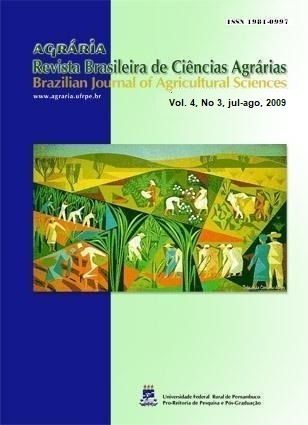Response of oats to the application of zinc in Oxisol
DOI:
https://doi.org/10.5039/agraria.v4i3a8Keywords:
greenhouse, zinc fertilization, forage grass, micronutrient, mineral nutritionAbstract
Despite the importance of zinc for the nutrition and production of crops, there is little information in about its effects on nutrition of black oat. Thus the present work aimed to study the effects of zinc applied to soil the growth and nutritional status of black oat. The experiment was conducted in a greenhouse using six doses of Zn (0, 15, 30, 60, 120 and 360 mg dm-3) arranged in a randomized design with four replications. The experimental unit was constituted by a pot with a capacity of 4 dm3, filled with 3 dm3 of an Oxisol sample (Zn = 0.1 mg dm-3) and 5 plants per pot. Thirty days after thinning the growth variables (height, stem diameter, number of tillers, leaf area), dry matter and zinc concentration in shoots were obtained. It was observed that the application of zinc to soil affected only the number of leaves and stem diameter of the plants. The highest Zn doses increased the content of this micronutrient in soil and plant, and reduced the growth of black oats. The critical levels of toxicity of zinc in soil and plant ware 135 mg dm-3 and 494 mg kg-1, respectively.



